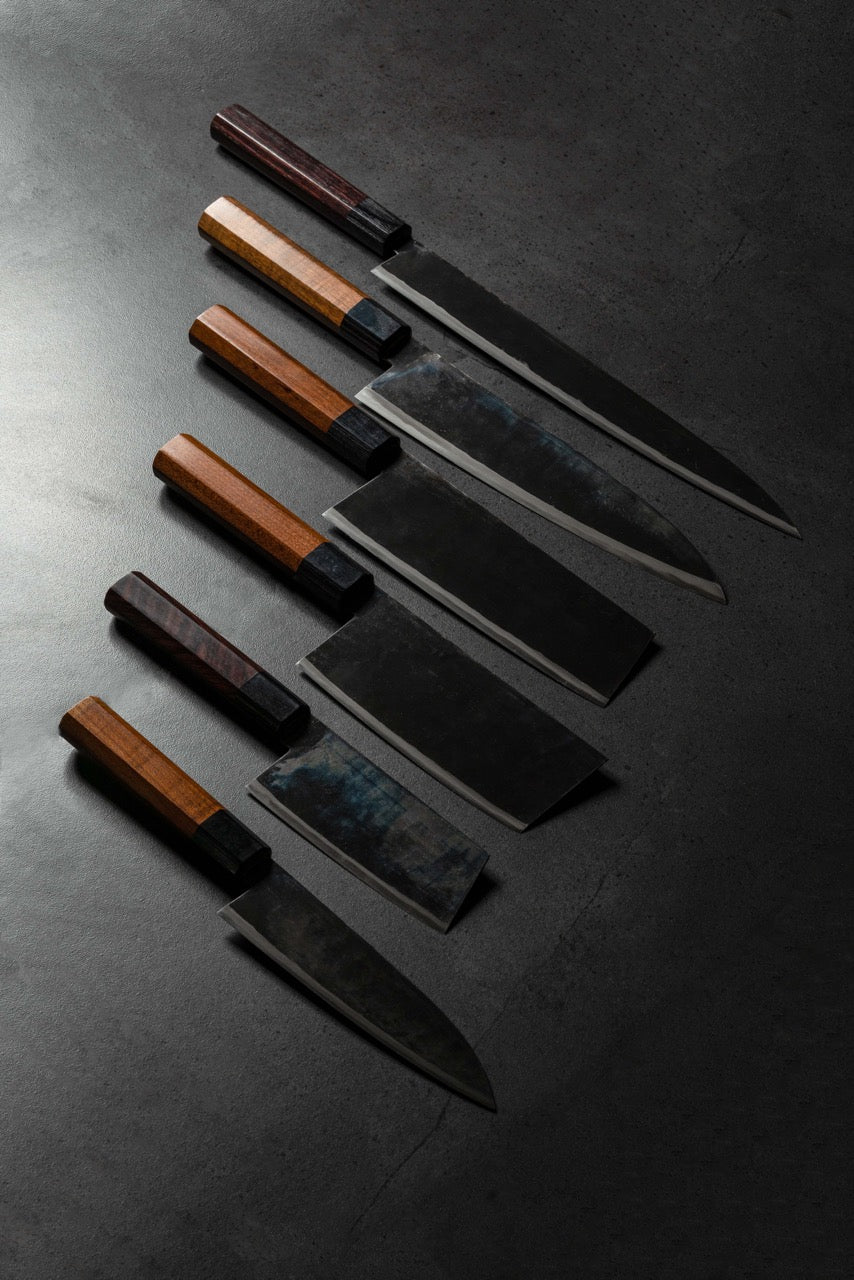
Hitohira TD Aogami #2 Kurouchi Santoku 165mm Noyer
Description
Le mot santoku se traduit par « trois vertus», ce qui réfère à la coupe de viandes, poissons et légumes ou encore aux trois types de coupe suivante : le hachage, le tranchage et la coupe en dés. Très polyvalent, le santoku est l’un des types de couteaux que nous recommandons comme premier couteau ou comme couteau principal dans la cuisine.
Expliqué simplement, l’Aogami #2 développé par Hitachi Metals est un acier fabriqué à partir de Shirogami #2 dans lequel on ajoute un peu de chrome et de tungstène pour une meilleure durabilité et une plus grande résistance à la corrosion. En plus de ça, la teneur en carbone plus élevé de l’acier permet d'obtenir une meilleure rétention de coupe. Objectivement, l’Aogami #2 est une amélioration par rapport au Shirogami #2. Pour les amateurs de patine par contre, l’acier Shirogami est plus réactif à l’oxydation et se pourrait un avantage.
La ville de Sanjo dans la préfecture de Niigata est célèbre pour son travail de forge depuis les années 1600. Les premières années, on y forgeait principalement des clous à la main. Puis, à partir de 1660, des techniques de forge différentes y ont été présentées par des forgerons d’Aizu. Grâce à cela, les forgerons de la ville commencent à diversifier leur production. La qualité des outils et couteaux de Sanjo jouit alors d’une forte réputation au Japon, ce qui est encore le cas aujourd’hui.
Tips for best results
Make sure your knife will deliver its absolute best by having it professionally sharpened at least once a year. Please note that our meticulously handcrafted Japanese knives are – unless otherwise noted – carbon steel and not stainless steel. To prevent rust, make sure the blades are patted dry – especially when cutting acidic items. Never cut frozen foods, hard products, bone, or twist the blade when using. Never soak in water after use or put in the dishwasher. After use, store in a cool, dry place and avoid high temperature fluctuations.
Our commitment to you – our customers
Warranty
Every knife we carry has a lifetime warranty from manufacturing defects and errors. For example, if the handle becomes detached or cracks appear after a few weeks of proper use. Or if there are any blade cracks from the edge to the spine. While such defects are indeed rare, they can occur. In such cases, we will exchange the knife in question or give you a refund. Each warranty case is different depending on the criteria, and we reserve the right in each and every case to evaluate the applicability of our lifetime warranty in the event of any manufacturing defects and errors.
After-Sales service
Do you get the feeling that your knife just can’t “cut it”?
Each knife we carry is supplied with a so-called “factory edge”. Our chef knife range comprises more than 200 different products. While all our handcrafted Japanese knives ship with a “factory edge”, ultimate blade sharpness can vary. If you feel that your knife’s blade edge is not performing to its full potential, feel free to contact us and we will provide you with professional sharpening for free!
Oops! What about the truly Unthinkable?
Was it just through a slight slip of the hand that your knife accidentally fell on the floor and damaged its tip and blade, or it was used to cut a hard, frozen product and chipped? Don’t despair, get in touch with us and we will solve the problem through our in-house, professional sharpening and repair service.
Simply contact us or visit our store to get a free estimate.








